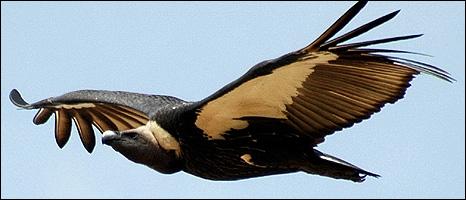This is according to a survey conducted by BirdLife International. These results are added to the dismal mammal survey published this week

Shortly before the new data on About a quarter of the world's mammals are at risk of extinction, the BirdLife International organization published the results of a survey that examined the condition of the birds. According to the survey: the population of the world's birds is dwindling. The survey refers to birds that are found and known by most people, birds that we are used to seeing as a permanent part of the environment.
About 45% of bird species in Europe are declining, so are 80% of waterfowl species in Australia. In Africa, birds of prey that are not in protected areas are affected, in Asia migratory birds are affected, populations of 62% of migratory waterfowl are decreasing or have already disappeared.
Observations of 124 species (in Europe) over 26 years showed that the populations of 56 species decreased in 20 countries. The main victims were birds that live in agricultural and populated areas, so (for example) the collared turtle population decreased by 79%,
The data collected by teams of surveyors and observers from around the world show that the damage is due to the destruction of habitats - deforestation, intensive agriculture, drying of water bodies, as well as - wild hunting, or as in the case of the white-rumped eagle (pictured) that 99% Its population was exterminated due to the use of anti-inflammatory drugs - Diclofenac - in cattle (in India).
The disappearance of the eagle that lived on the carcasses of domestic animals and was a sanitation in large areas will cause many carcasses to remain in the field and be a breeding ground for disease outbreaks. In large parts of India and Pakistan, the use of the drug was banned - too late.
Another species whose population is dwindling is the albatross. About 100,000 albatrosses remain. These are attracted to baits, get tangled in fishing rods and… die. In Argentina, the yellow cardinal was common, hunting and trapping to market as a pet bird destroyed its population almost entirely. Arabani-Azur in Spain and Portugal suffers from the cultivation of habitats for the "benefit" of agricultural areas as well as from warming that pushes the population northward.
The damage is all over the world in nesting (and breeding) areas, but also in Harifa areas and along the route between the areas, populations of migratory birds between Europe (and Asia) and Africa are severely affected, an injury that is also visible here, since as someone who is on a main migration axis, you can notice a decrease in the amount of migratory birds.
Damage to common birds illustrates the damage to the entire environment and therefore requires immediate attention and preventive action. The survey also refers to rare birds: out of every eight birds in the world, one is listed as being in a risk group, that is, about 1200 species in various degrees of risk, of which 190 species are in immediate danger of extinction.
Like the canary in the mines, 10,000 species of birds constitute an "environmental barometer" and their condition indicates the state of health of their habitat and the entire environment. The survey that refers directly to birds shows how the entire environment is affected. The editors of the survey will use the survey, the data of which will be published at the world conference of the union in Buenos Aires, to call on governments to keep their promise, "to stop the ongoing damage to biological diversity by 2010".
Because the goal is to convince world leaders to recognize their responsibility for a healthy environment and to accept the fact that biodiversity is an essential value...
The time has come that instead of controlling the environment for the sake of the human population, there will be control of the human population for the sake of the environment.
On the same subject: African extinction

6 תגובות
Who else is in extinction????
Instead of worrying about all kinds of flies and bugs, worry about the children of Africa who crave bread!
All the money you spend on animals is better if you buy bread for a Rab child and not get stuck in nonsense!
Do you know if such DNA collection is done for endangered species, or is the collection arbitrary? Who is involved in the project?
It's not science fiction what you say, and already today there are collections of DNA (in cells or tissues, I don't know exactly how it goes there) that save the DNA of animals in danger of extinction so that they can be retrieved if ever needed
Is it possible to exhaust the DNA of a living being? It is possible that in the future it will be possible to create a living creature based on its DNA, which is actually a "recipe" for the various proteins in its body. Just as Dolly the sheep was cloned using DNA, perhaps it would be better to extract DNA from endangered animals and if necessary "revive" some items. Even if such technology sounds like science fiction today, in a few decades it may be practical.
And the spirit of the eagle will be silent
And the fire of the Tidom embers
Because man forgot his innocent spirit
which blows with the hawk's wing to make him happy.